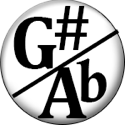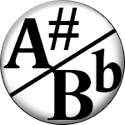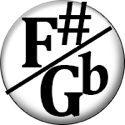Guitar Triads Chart (Diminished)
For this example, we’ll use an Ao triad: A, C, E♭.
Warning: theory ahead! If you have trouble understanding the theory, you can always learn the chords first and come back to the theory later. But you will understand the chord better when you understand what it is, why it exists, and how it works. That’s called music theory.
The diminished triad is a very useful structure. It rarely appears at all in the major key, except as the upper three notes of the V7 chord. Here’s an example in the key of B♭ major:
| Chord | Roman Numeral | Notes |
| F7 | V7 | F, A, C, E♭ |
| Ao | viio | A, C, E♭ |
This chord could very well be used any time you hear a V7 chord in the major key. It also has a special role in the minor key as well, where it often appears in the chord progression IIo, V7, I-. If this Ao chord were being used in that chord progression, the progression would be:
| Adim | D7 | Gmin |
For now, let’s first study the chords. Applying them is the key to remembering them and calling upon them later in your playing.
Diminished Triads – Strings 6, 5, 4
Root Position
First Inversion
Second Inversion
Diminished Triads – Strings 5, 4, 3
Root Position
First Inversion
Second Inversion
Diminished Triads – Strings 4, 3, 2
Root Position
First Inversion
Second Inversion
Diminished Triads – Strings 3, 2, 1
Root Position
First Inversion
Second Inversion
Key Tasks
- Play through the chords and learn all of them.
- Practice the chords up and down one string set, as shown above (e.g., 654).
- Practice the chords across string sets, e.g., Root on 654, 1st inversion on 543, etc.
 As the creator of Hub Guitar, Grey has compiled hundreds of guitar lessons, written several books, and filmed hundreds of video lessons. He teaches private lessons in his Boston studio, as well as via video chat through TakeLessons.
As the creator of Hub Guitar, Grey has compiled hundreds of guitar lessons, written several books, and filmed hundreds of video lessons. He teaches private lessons in his Boston studio, as well as via video chat through TakeLessons.











